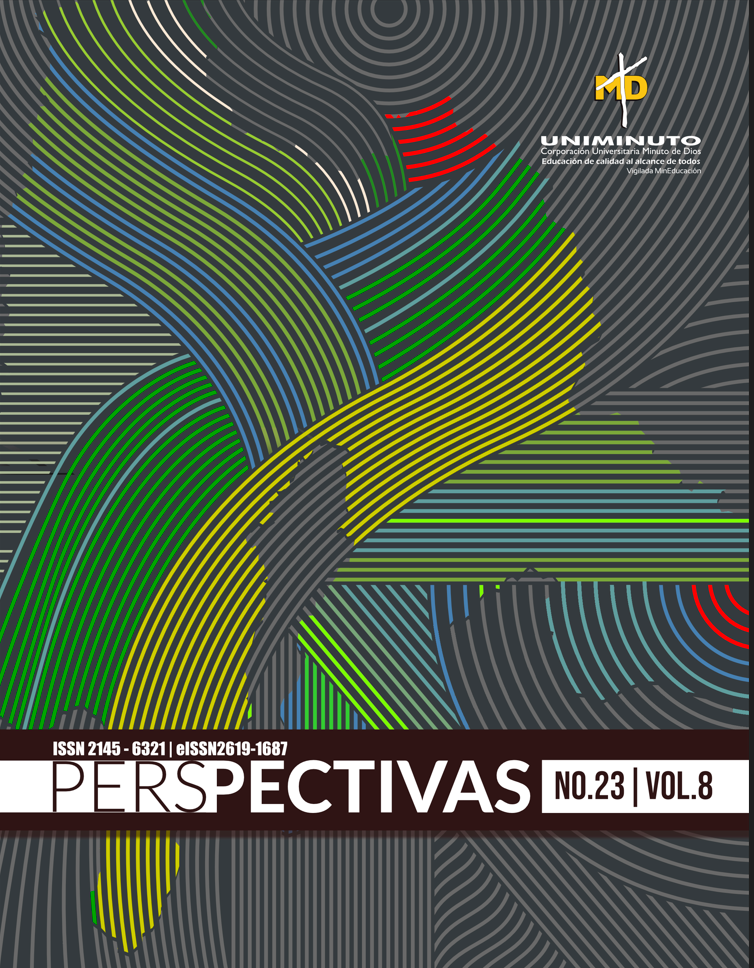Gamificación, una estrategia didáctica para mejorar la lectura inferencial en una institución educativa de Casanare, Colombia
Barra lateral del artículo
Cómo citar
Detalles del artículo

Esta obra está bajo una licencia internacional Creative Commons Atribución 4.0.
Contenido principal del artículo
Resumen
Este artículo muestra los resultados de una investigación elaborada con el objetivo de fortalecer el nivel de lectura inferencial que tienen los estudiantes haciendo uso de la gamificación en una institución educativa del municipio de Orocué. Para esto, se llevó a cabo el enfoque metodológico mixto con el modelo basado en diseño, donde participaron 25 estudiantes del grado sexto de dicha institución. A partir de un análisis estadístico con la prueba paramétrica T-Student se logró evidenciar diferencias significativas entre las medias de los test de comprensión lectora inferencial inicial y el final, el cual se hizo posterior a la implementación de la propuesta gamificada con un balance positivo en las respuestas de los estudiantes, lo que da cuenta de su importante valor en los procesos de aprendizaje en tanto dinamiza las prácticas pedagógicas y los ambientes educativos para la enseñanza de la lectura.
Referencias
Álvarez-Zapata, D. (2002). Del Modo De Leer Como Modo De Producción y Consumo Textual: Ideas Fundamentales De Una Categoría En Construcción (The Way We Read as a Textual Production and Consumption Mode: Main Ideas of a Category Being Constructed). Revista Educación y Pedagogía, 14(32), 137-149.
Aravena, M. S. (2004). Noción de inferencia y procesamiento inferencial en personas con daño cerebral. Onomázein, 10 (2), 145-162.
Cassany, D., Luna, M., & Sanz, G. (2008). Enseñar lengua (13a. ed.). Graó.
Cisneros-Estupiñán, M., Olave-Arias, G., & Rojas-García, I. (2012). Cómo mejorar la capacidad inferencial en estudiantes universitarios. Educ. Educ., 15(1), 45-61
Deterding, S. Dixon, D. Khaled, R. y Nacke, L. (2011). From game design elements to gamefulness: defining ‘gamification’. Proceedings of the 15th International Academic MindTrek Conference: Envisioning Future Media Environments (MindTrek ‘11). ACM, New York, NY, USA, 9-15. http://doi.acm.org/10.1145/2181037.2181040
Díaz, L (2013). Gamification Plan Design Experience for Promoting Engagement and Active Learning in an Undergraduate LevComputational Science Course.In: european distance and e-learning network annual conference. the joy of learning. enhancing learning experience - improving learning quality, 2013, Oslo. Proceedings […]. Oslo: University of Oslo, 2013. https://cutt.ly/uffHYER. Acceso en: 6 nov. 2019
Durango Herazo, Z. (2015). La lectura y sus tipos. http://www.curn.edu.co/lineas/lectu
ra/896
Faiella, R. (2015). Gamification and Learning: A Review of Issues and Research. Journal of E-Learning and Language Society, Modema, v. 11, n. 3, p. 13-21, 2015.
Foncubierta, J. M. Rodríguez. (2014). Didáctica de la gamificación en la clase de español. Edinumen.
Gaitán, V. (2013). Gamificación: el aprendizaje diver-tido. http://www.educativa.com/blog-articulos/gamificacion-el-aprendizaje-divertido/
Gené, O.B., (2015) Fundamentos de la gamificación.
Jouini, K. (2005). Estrategias inferenciales en la comprensión lectora. Revista de Educación aldadis.net, (4). http://docplayer.es/20847385- Estrategias-inferenciales-en-la comprension-lectora-khemais jouini.htm
León, J. A. (2003). Conocimiento y Discurso. Claves para inferir y comprender. Pirámide
Martínez, M. (2013). El procesamiento multinivel del texto escrito ¿Un giro discursivo en los estudios sobre la comprensión de textos? .Enunciación.18(102), 124-139. http://revistas.udistrital.edu.co/ojs/index.php/enunc/article/view/7488/9293
Mendoza, A.& Briz, E. (2003). Didáctica de la lengua y la literatura. Editorial Prentice Hall
Ministerio de Educación Nacional, (1998). Lineamientos curriculares de Lengua Castellana. Cooperativa Editorial Magisterio
Moya Pardo, C. (2006). Relevancia e Inferencia: Procesos cognitivos propios de la comunicación humana. Forma Y Función, 19, 31–46. http://www.scielo.org.co/pdf/fyf/n19/n19a02.pdf
Moreno-Ger, P., Burgos, D., Martínez-Ortiz, I., Sierra, J. L. y Fernández-Manjón, B. (2008). Educational game design for online education. Computers in Human Behavior, 24(6), 2530-2540. https://doi.org/10.1016/j. chb.2008.03.012
OCDE. (1999). La evaluación de la lectura, las matemáticas. https://www.oecd.org/education/school/programmeforinternationalstudentassessm entpisa/33693817.pdf
OCDE. (2009). OCDE mejores políticas para una vida mejor.
Ramírez,L. (2017). La comprensión lectora: un reto para alumnos y maestros.https://observatorio.tec.mx/edu-bits-blog/2017/8/21/la-comprensin-lectora-un-reto-para-alumnos-y-maestros.
Solé, I. (1992). Estrategias de lectura. Editorial Graó.
UNESCO. (1998). Redalyc.Las Tic en los procesos de enseñanza y aprendizaje. https://www.redalyc.org/pdf/761/76102311.pdf
Waiyakoon, S., Khlaisang, J. y Koraneekij, P. (2015). Development of an instructional learning object design model for tablets using game-based learning with scaffolding to enhance mathematical concepts for mathematic learning disability students. Procedia - Social and Behavioral Sciences, 174, 1489-1496. https://doi. org/10.1016/j.sbspro.2015.01.779

